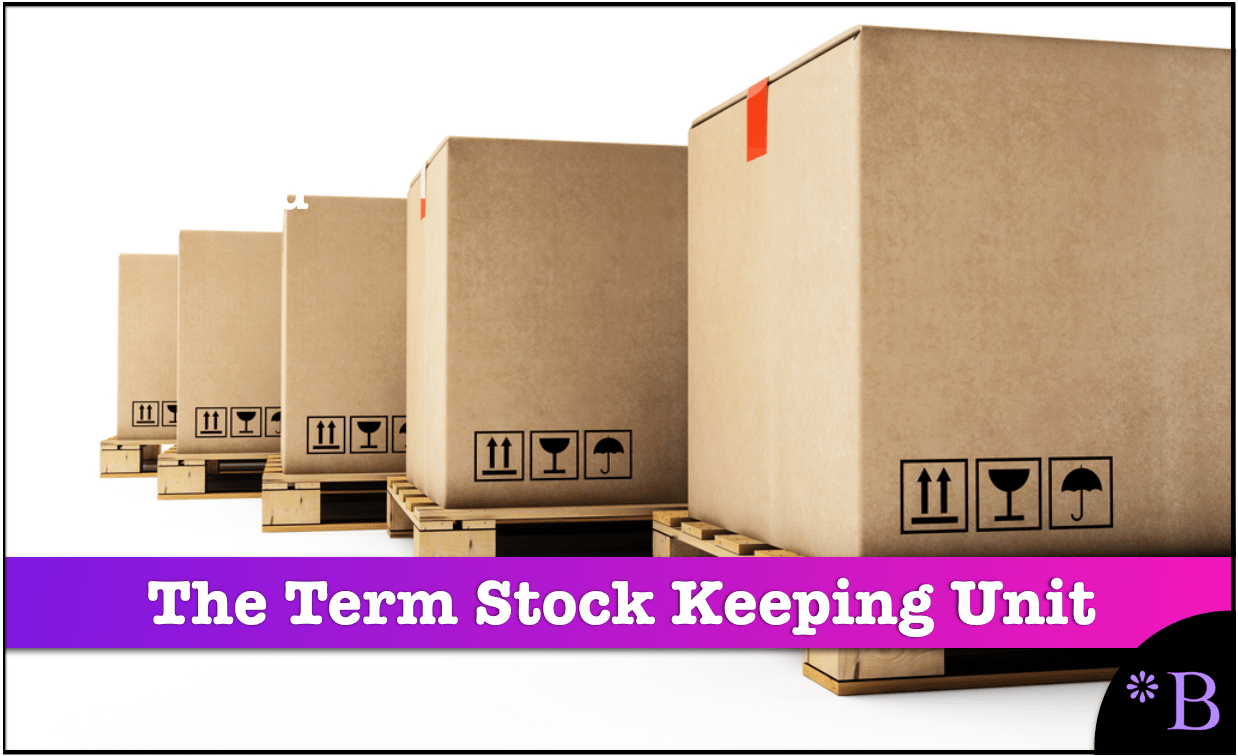How to Best Understand What the SKU Stands For and the SKU Number
Executive Summary
- The term SKU stands for something specific and is associated with the SKU number.
- The SKU number tells us important things about the properties of the SKU.

Video Introduction: How to Best Understand What the SKU Stands For and the SKU Number
Text Introduction (Skip if You Watched the Video)
SKU stands for “stock keeping unit,” a commonly used term in supply chain management. According to the website Lokad, an SKU is…
See our references for this article and related articles at this link.
“Refers to a specific item stored to a specific location. The SKU is intended as the most disaggregated level when dealing with inventory.”
A little later on, I will discuss why this explanation of the term is inconsistent with the SKU number. Understanding what the name SKU stands for means knowing a bit about how the term first developed.
Understanding what the term SKU stands for means knowing a bit about how the name first developed.
Origin of What the Term SKU Stands For
The term Stock Keeping Unit was initially used at the store level. So if one goes into a Target, each product has a bar code called a Stock Keeping Unit. That is a distinct item from any other item in that store.
And for that purpose, the term works perfectly well.
The problem arises when one works in supply chain management, and that same Stock Keeping Unit is in many locations, including warehouses. Therefore what the term SKU stands for does not translate well outside of the single store environment.
SKU Numbers
SKU numbers are internal numbers and letters that are used for products. Sometimes the SKU number can have a code that is human-readable build into it. For instance, the following SKU number could apply for socks.
- NK-SK-BL-8-12-0023
The code of this type of SKU number would be the following:
Manufacturer, Color, Size, Model Number. Therefore this is
Therefore this SKU number tells us that this is an (NK) Nike, (SK) Sock, (8-12) Size 8 to 12, (0023) model number.
Most SKU numbers are short, and therefore, one has to know the “code” to read them. An SKU number identifies the SKU from other SKUs and provides information about the SKU to the individual/company/entity that maintains the SKU.
Location as Part of the SKU Number?
Something else interesting about SKU numbers is that they do not have a location component. I have never seen an SKU number that looked like the following:
- NK-SK-BL-8-12-0023-SDDC
That is the last add-on being (SDDC) San Diego Distribution Center.
This is because it makes no sense to have a location appended to an SKU. After all, an SKU travels through the supply chain, and if it had a location appended to the SKU number, then every time SKU was transferred, it would have to have its SKU number altered. That would create a serious problem.
Is the Term SKU a Useful Term?
SKU, which stands for “stock keeping unit,” is a commonly used term in supply chain management. According to the website Lokad, an SKU is…
refers to a specific item stored to a specific location. The SKU is intended as the most disaggregated level when dealing with inventory.
That is not how I have found the term to be used in practice. When people use the name SKU, they only mean the “product” divorced from its location. For years the term SKU-Location or “SKUL” was commonly used in companies and still is.
The Problem with the Term SKU
The term Stock Keeping Unit was initially used at the store level. So if one goes into a Target, each product has a bar code called a Stock Keeping Unit. That is a distinct item from any other item in that store. And for that purpose, the term works perfectly well. The problem arises when one works in supply chain management, and that same Stock Keeping Unit is in many locations, including warehouses.
In that environment, the term SKU, which has some confusion about whether it is tied to a location or not linked to a location, is more confusing than helpful. I can say this because I have had repeated discussions where I have to ask, or the other person has to ask if they mean an SKU or an SKU location combination. For this reason, I recommend the use of a different term.
That is the term product location combination or “PLC” for short or even the “PL.”
The Product Location Combination, the PLC
The term “product location combination” is excellent because it is impossible to confuse with any other meaning. All supply networks are made up of a mix of goods at locations. If we look at a company that carries 100 products and has 10 locations, 1000 product site combinations are the maximum number of potential product location combinations.
Counting Valid PLCs
In most cases, the actual number will be significantly lower than this as companies don’t carry every product at every location. On the other hand, when on looks in the supply chain system, there are often many more product location combinations than the theoretical maximum because of old product locations that have not been removed from the system. Therefore another important distinction is how many “active” PLCs exist in the system.
Conclusion
- The term SKU has been around for a very long time.
- The term SKU stands for is not descriptive in that it does not tell the listener what they want to know.
- SKU does not include within it whether it refers to a location, and opinions vary as to what its meaning is.
- When you use the term SKU, it may have a different meaning to the listener.
- SKU numbers are important components to supply chain management, and an SKU number identifies the SKU from other SKUs and provides information about that SKU.